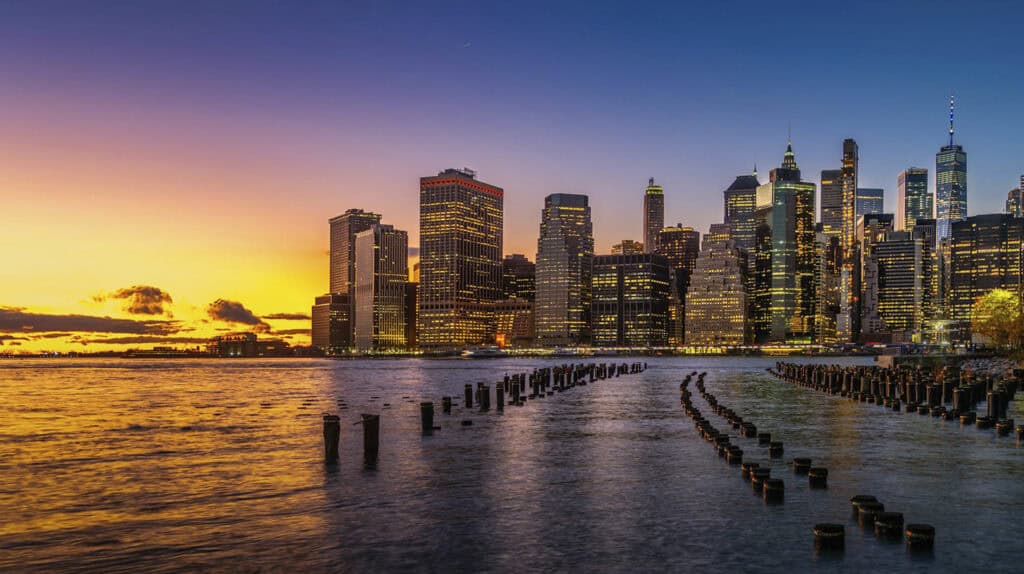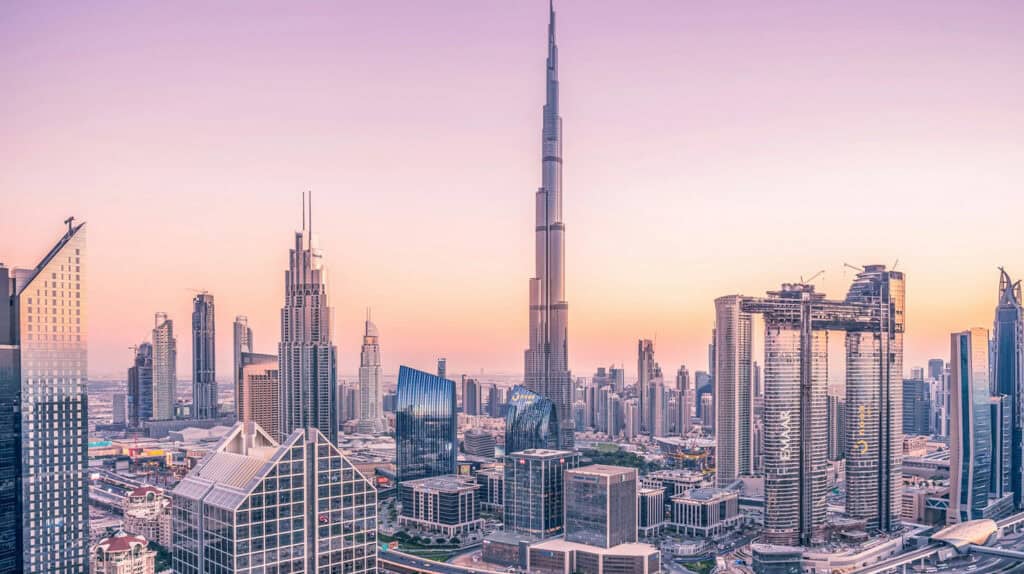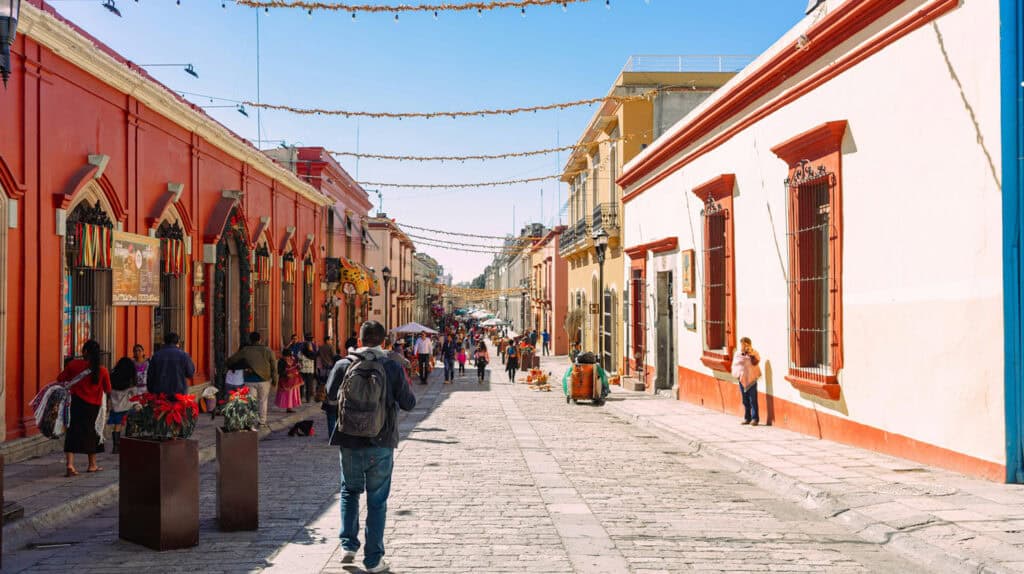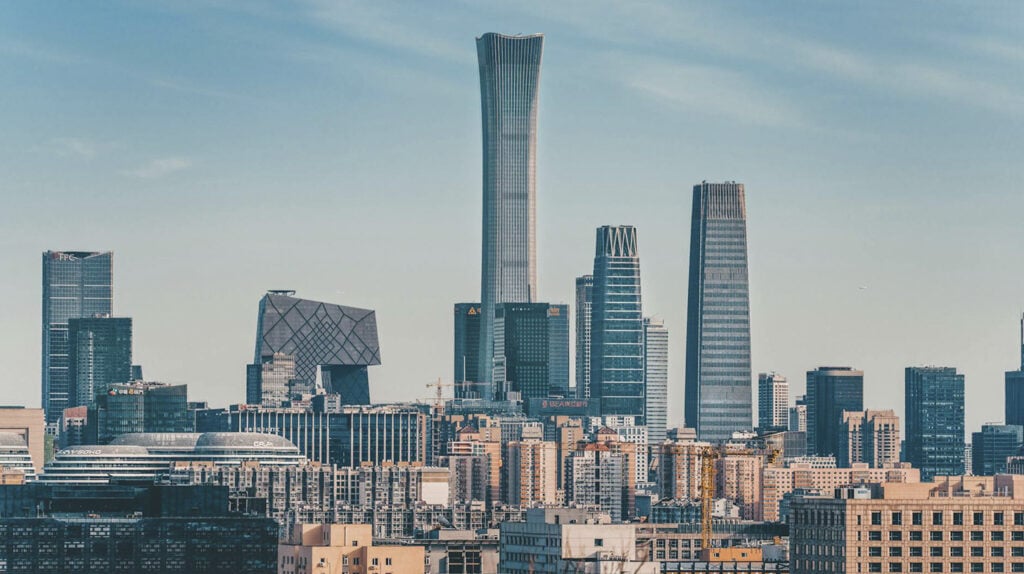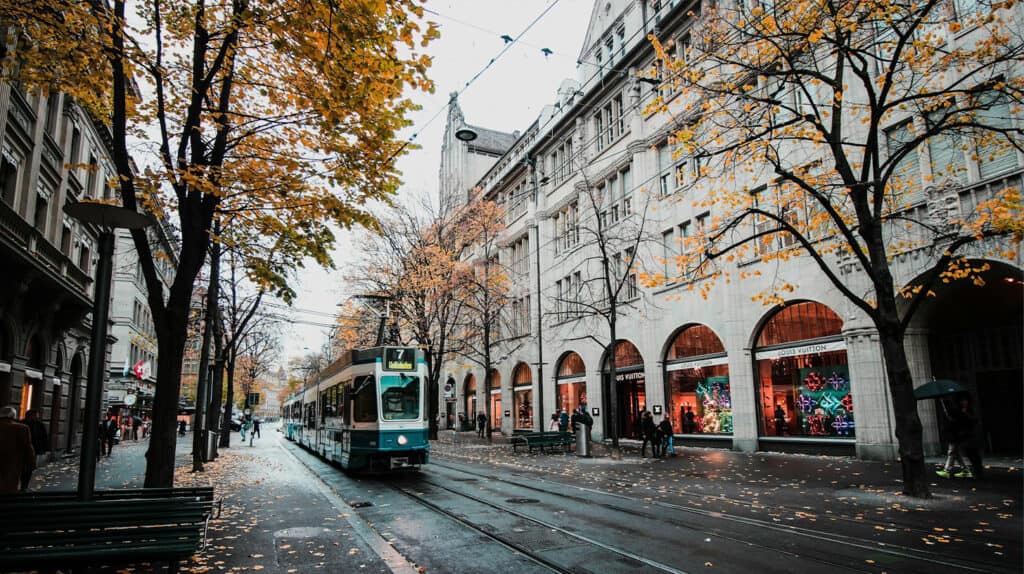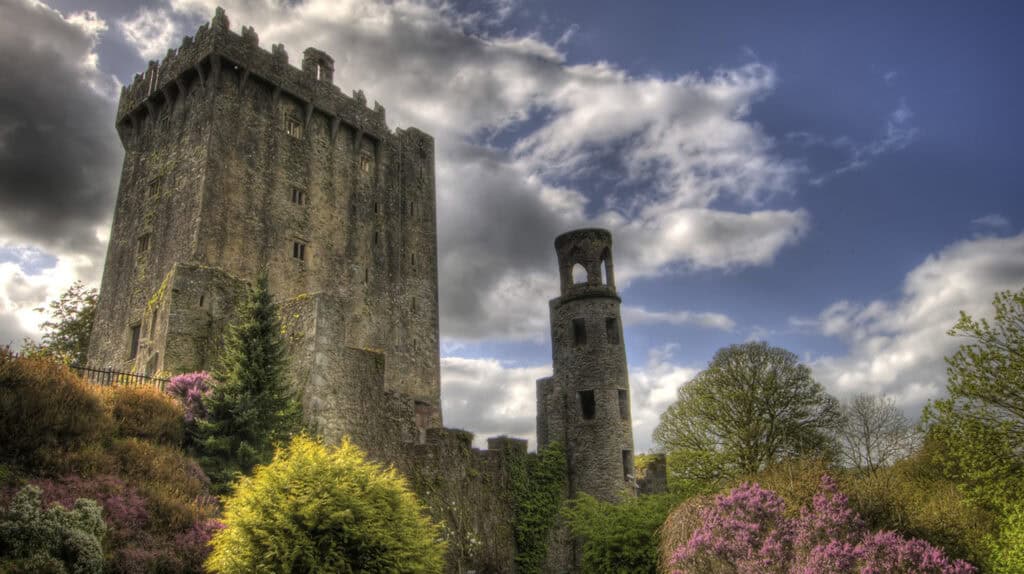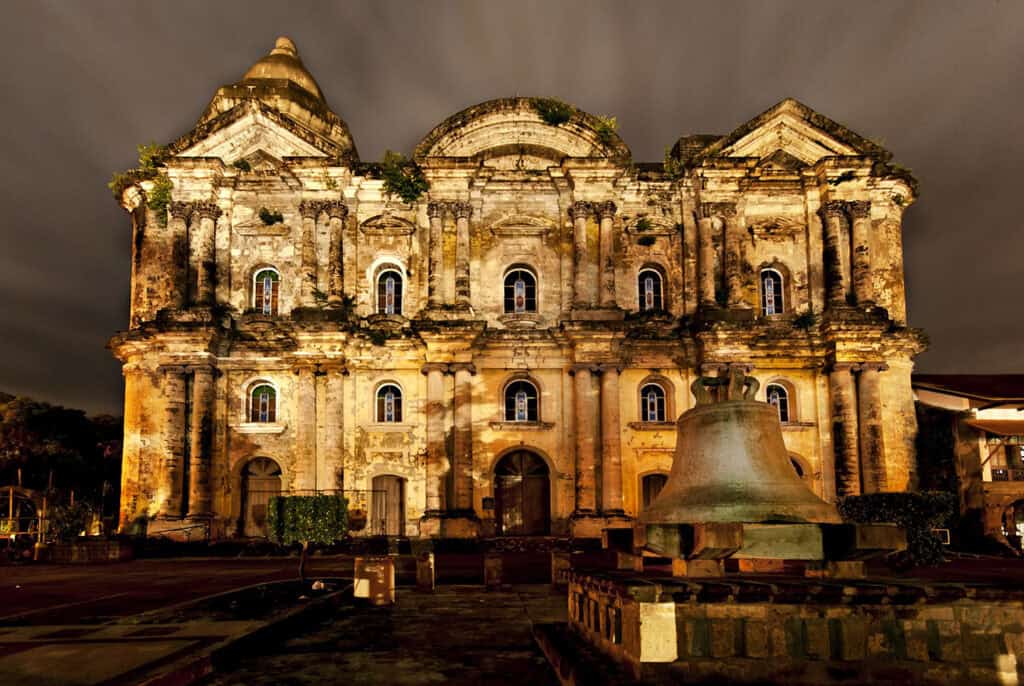
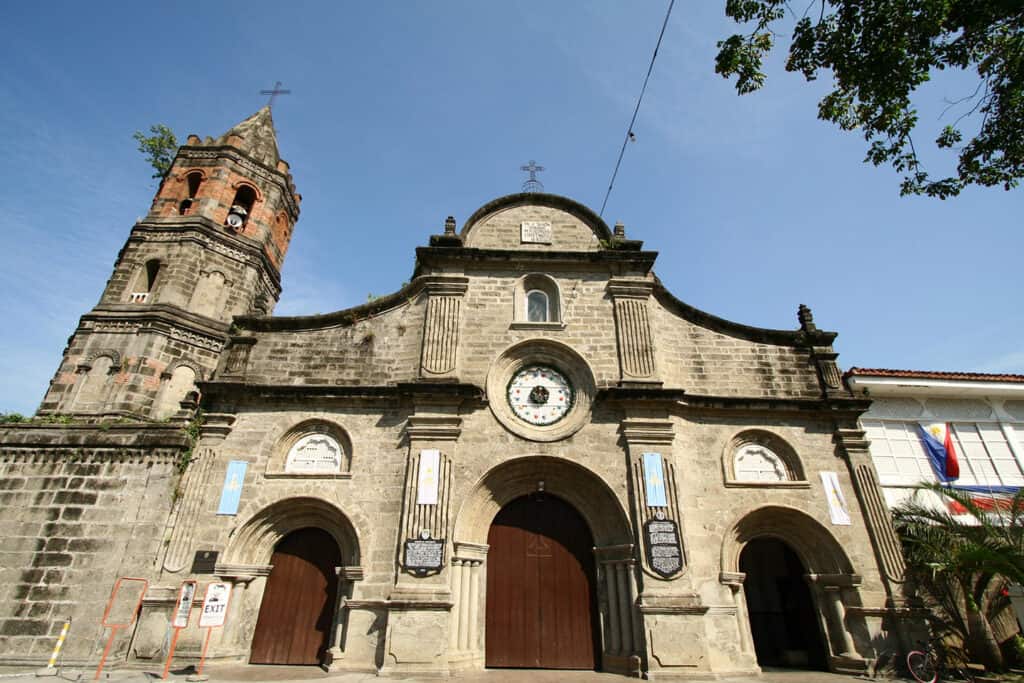
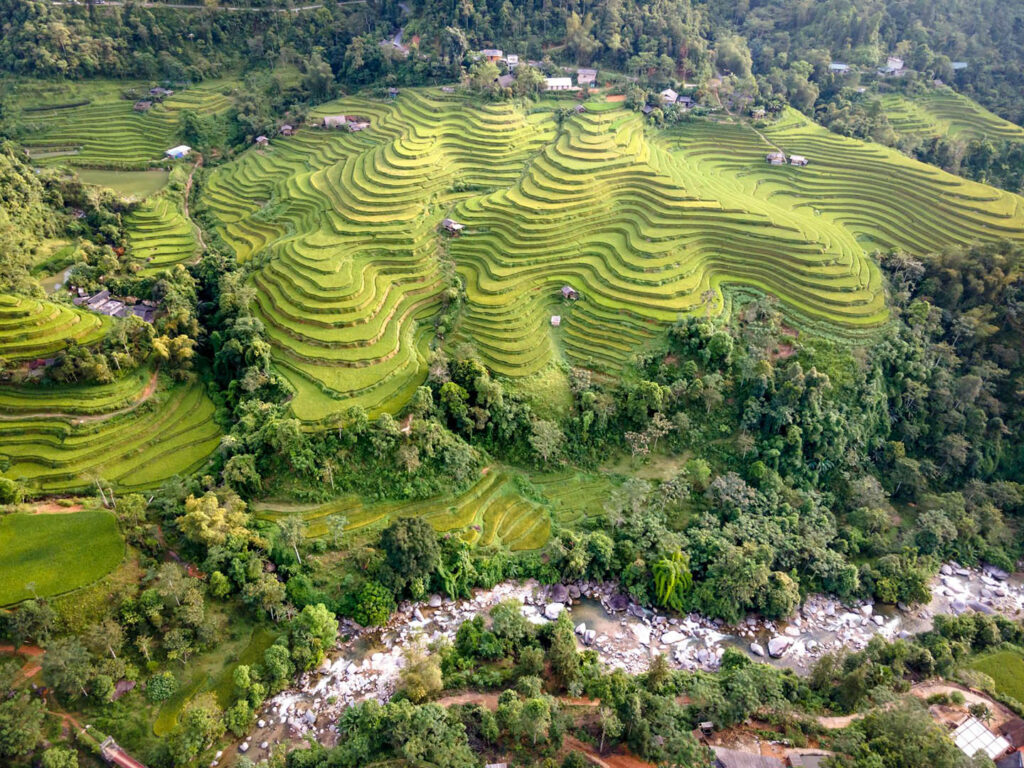
Want to explore the Philippines’ most famous landmarks? From historic churches and colonial towns to stunning natural wonders, the Philippines offers a variety of must-see sites. Whether you’re interested in history, nature, or architecture, the country has something for everyone.
At Landmarks Architects, we help you discover the beauty and stories behind these landmarks, showcasing both historic landmarks and modern attractions.
In this article, we’ll explore:
- Iconic landmarks like Rizal Park and Intramuros
- Natural wonders such as the Chocolate Hills and Taal Volcano
- Modern sites like the SM Mall of Asia and The Mind Museum
We’ll also highlight different types of architectural styles and architectural building types found in the country, from colonial designs to contemporary buildings.
Ready to discover the Philippines’ famous landmarks? Let’s start!
3 Iconic Landmarks in the Philippines
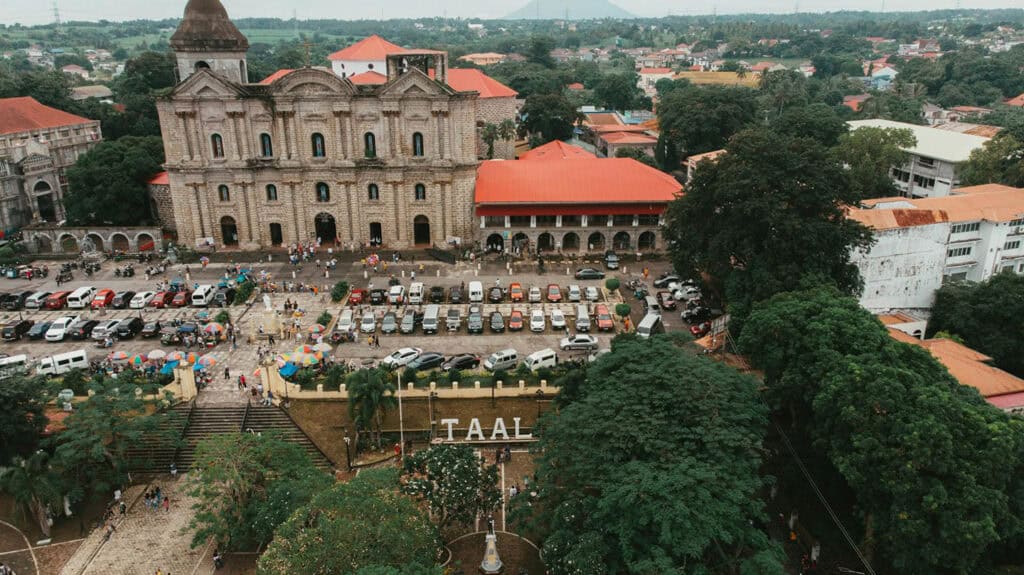
1. San Agustin Church
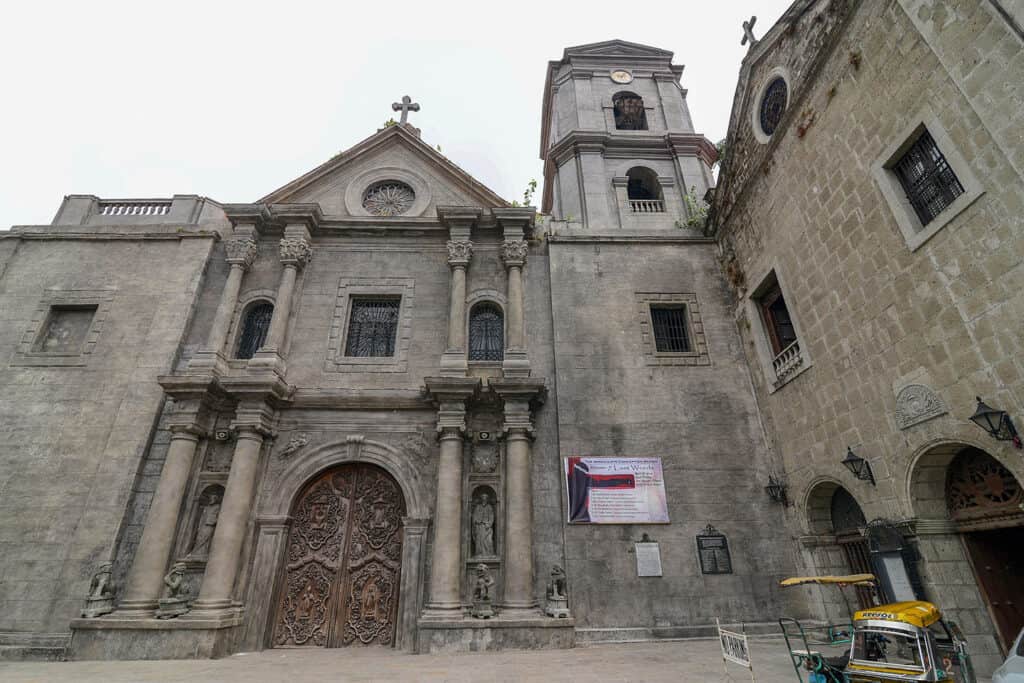
San Agustin Church in Manila is the oldest stone church in the Philippines. Built during the Spanish colonial period, it has beautiful Baroque-style architecture.
The church is a UNESCO World Heritage Site, and its design includes intricate carvings and large wooden doors. It shows the influence of Spanish rule and is a symbol of Philippine history.
2. Intramuros
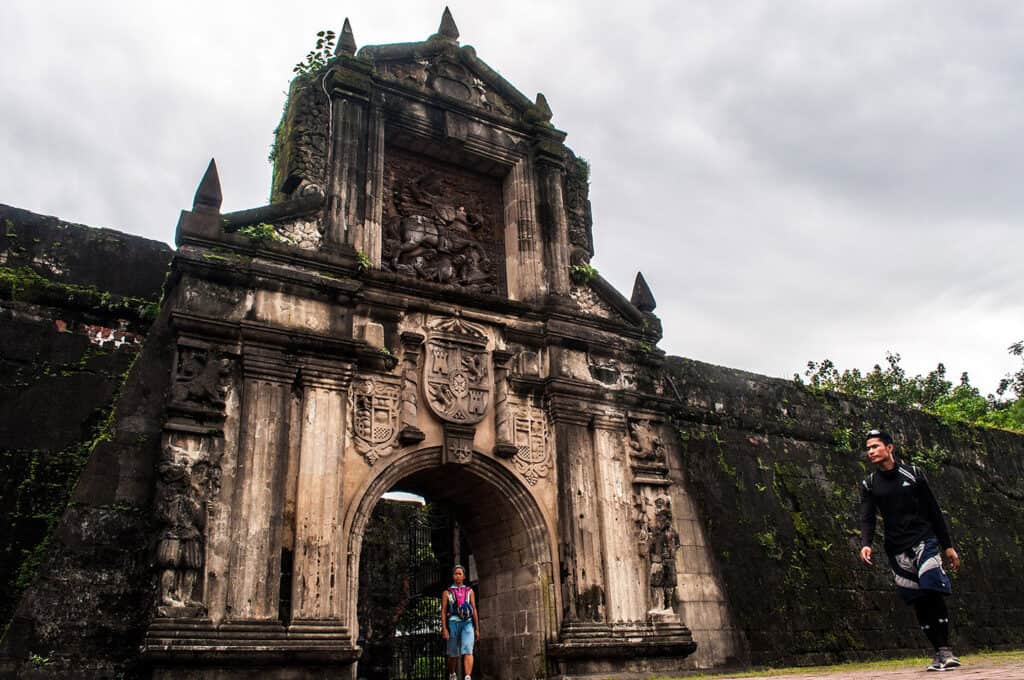
Intramuros is the historic walled city of Manila, one of the most important historical landmarks in the Philippines. Built during the Spanish colonial period, it features walls, gates, and fortresses such as Fort Santiago, which showcase Spanish military architecture.
These buildings were designed to protect the city from attacks during the Spanish colonization. Intramuros is a famous Philippine landmark and tells the story of Filipino culture during Spanish rule.
3. Taal Basilica
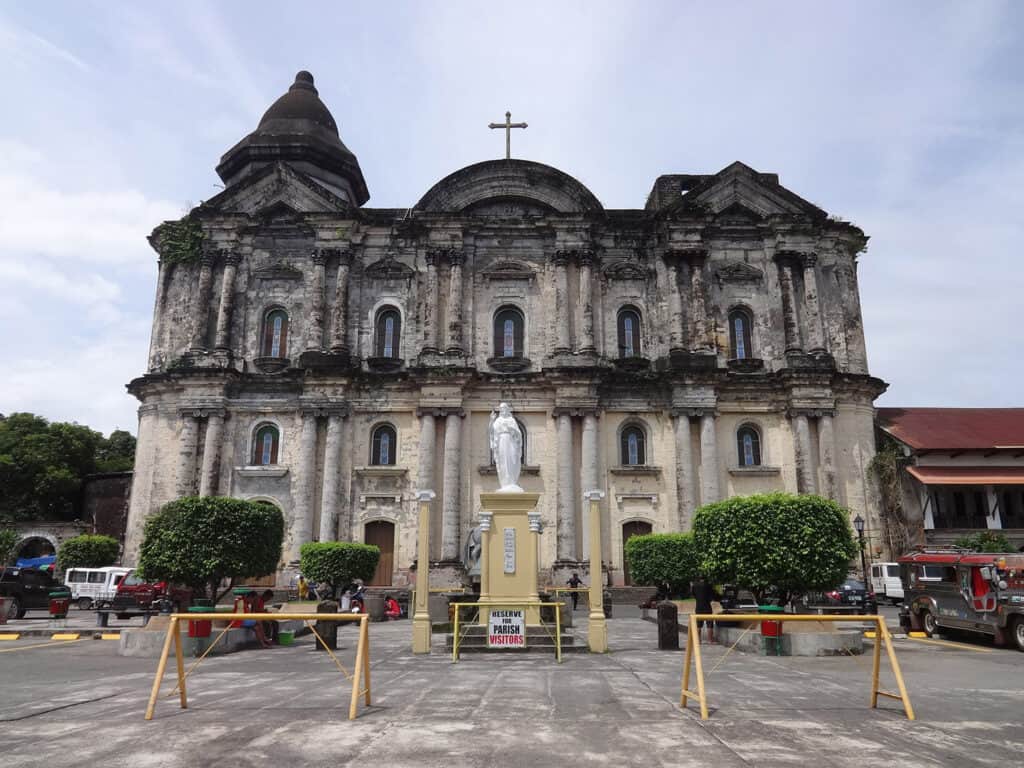
The Taal Basilica, or Minor Basilica of Saint Martin of Tours, is the largest church in the Philippines and Asia, measuring 88.6 meters long and 48 meters wide. Located in Taal, Batangas, it has Neo-Classical architecture with large arches and Ionic and Doric columns.
Built during the Spanish colonial period, it reflects Filipino culture and Spanish influence. Known as a national historical landmark, it is also one of the most famous architectures in Asia and a must-see for those visiting important landmarks in the Philippines.
Historical Landmarks
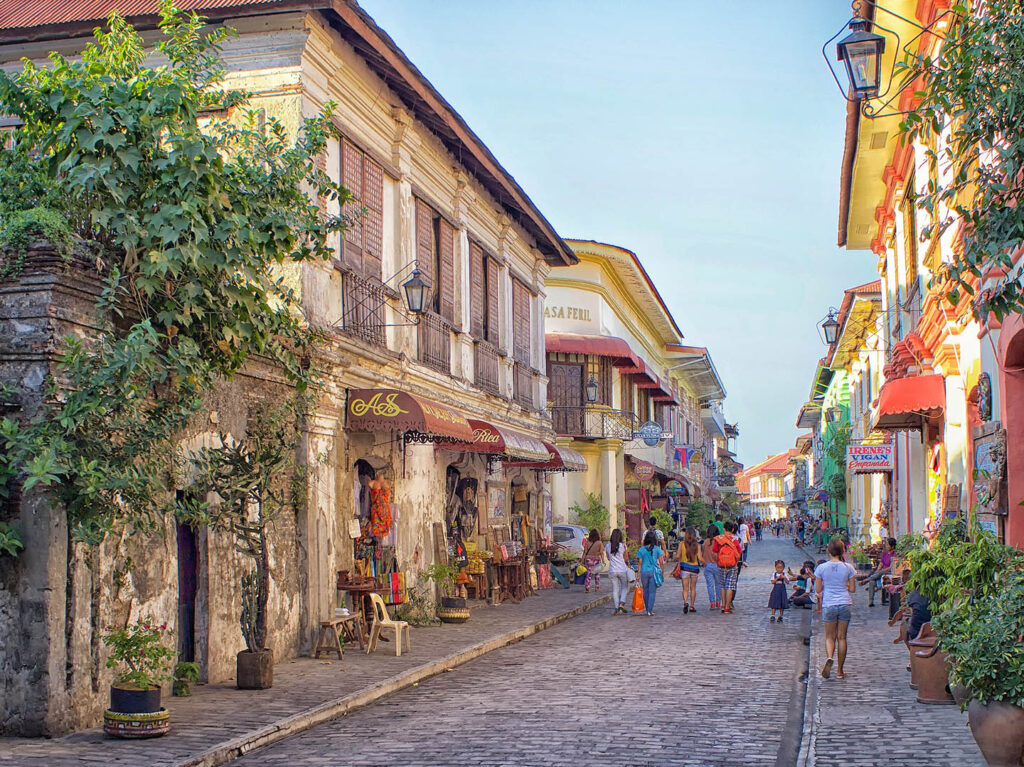
4. Rizal Park
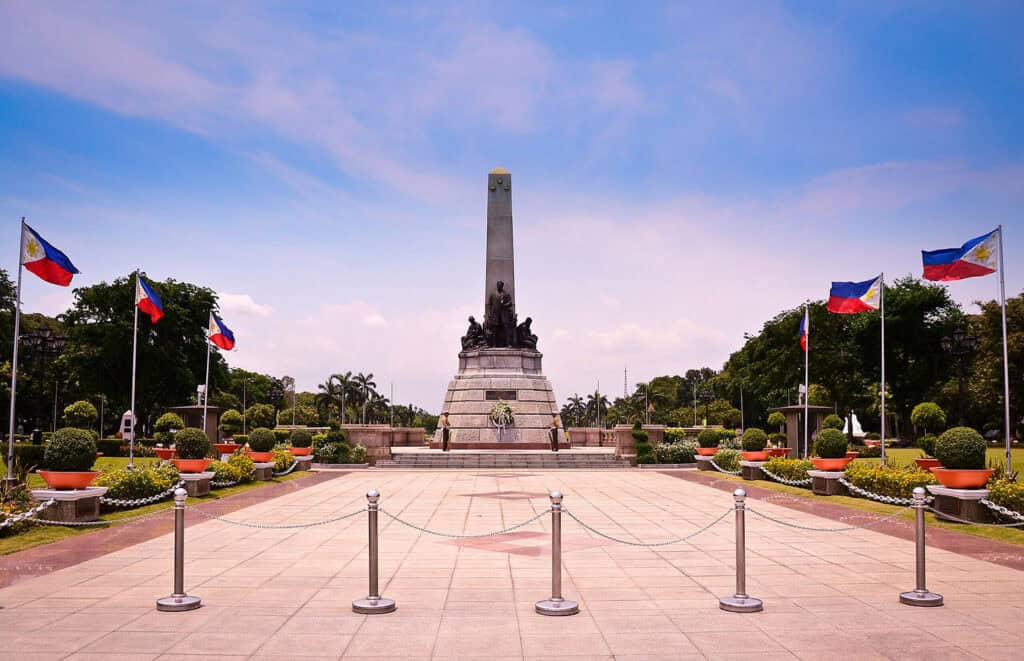
Rizal Park, also known as Luneta Park, is one of the most famous historical places in the Philippines. It honors national hero Dr. José Rizal, who fought for Philippine independence.
The park features gardens and statues that celebrate Filipino culture and the country’s journey to freedom, making it one of the important architectural landmarks in the Philippines.
See Also Traditional Mexican Architecture: 3 Highlights That Define Mexican Architecture
5. Magellan’s Cross
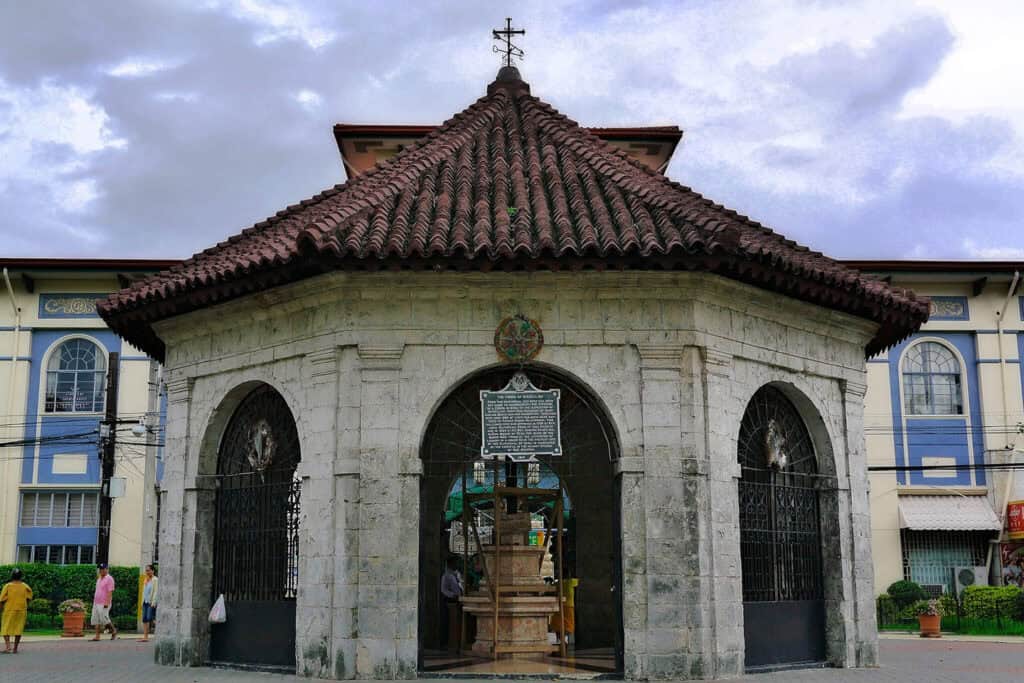
Magellan’s Cross in Cebu City marks when Ferdinand Magellan planted a cross in 1521, introducing Christianity to the Philippines.
It is kept in a small octagonal concrete pavilion, with the original cross encased in a tindalo wood cross. This famous landmark highlights Spanish colonization and the impact of Christianity on Filipino culture.
6. Barasoain Church
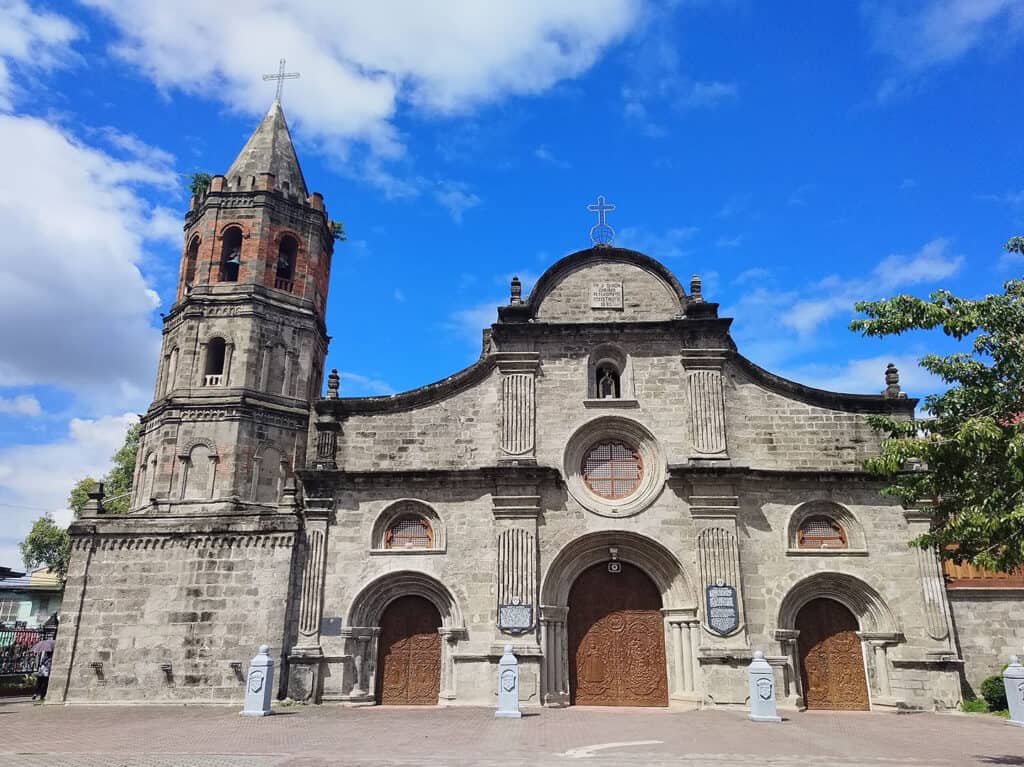
Barasoain Church, called the “Cradle of Philippine Democracy,” is where the First Philippine Republic was established on January 23, 1899.
This historic landmark marks the start of the first democratic government in Asia. Its architecture shows the Spanish colonial period with simple and elegant Neo-Classical designs.
7. Corregidor Island
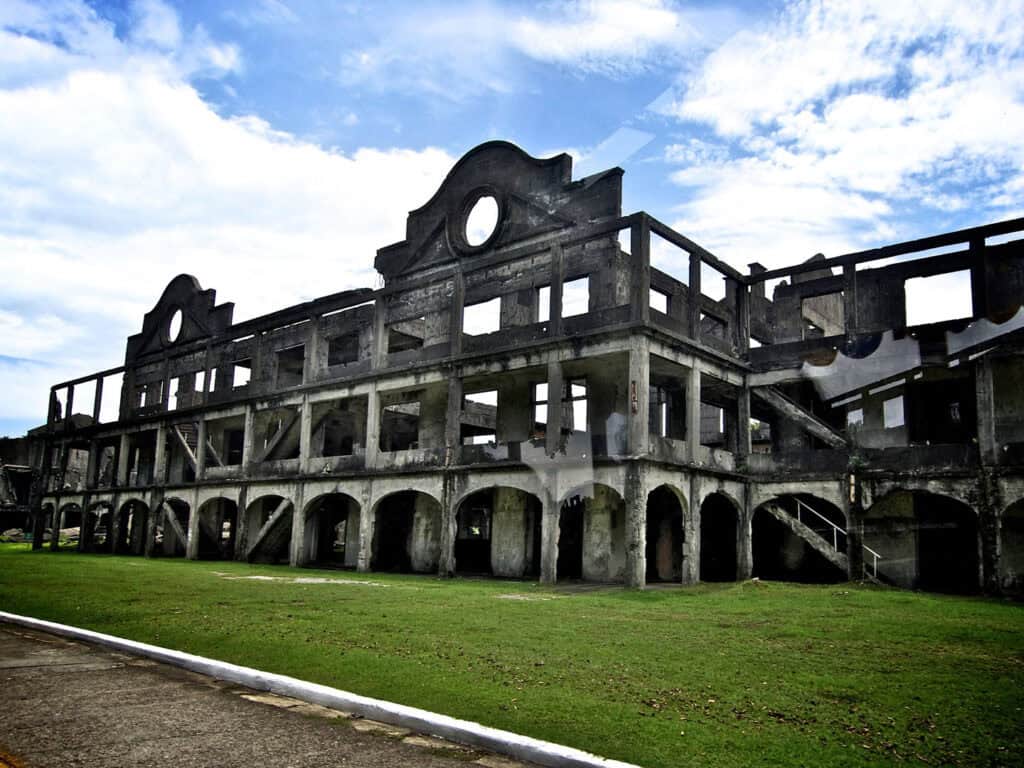
Corregidor Island is famous for its role during World War II. The island has memorials and ruins that tell the story of the Filipino and American soldiers who fought against the Japanese forces.
The island has secret tunnels and Pacific War Memorials that make it an important historical site. Its historical value and military structures showcase the struggle for freedom during the Japanese occupation.
See Also Chinese vs. Japanese Architecture: 6 Contrasts in Harmony and Dichotomy
8. Vigan City
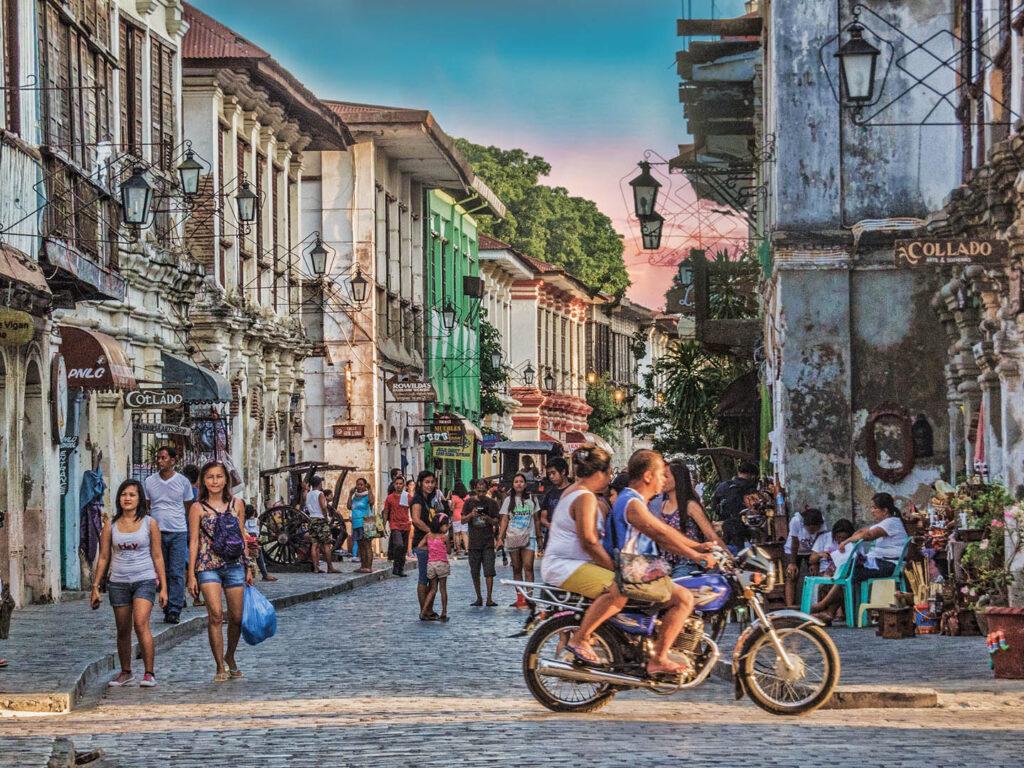
Vigan City is a UNESCO World Heritage Site and a well-preserved example of a Spanish colonial town. The streets are made of cobblestones, and the houses are designed with Spanish colonial architecture.
This historic city gives visitors a tour of Filipino culture during the Spanish colonization. Vigan is one of the best places to see the blending of Spanish and Filipino culture.
Modern Landmarks
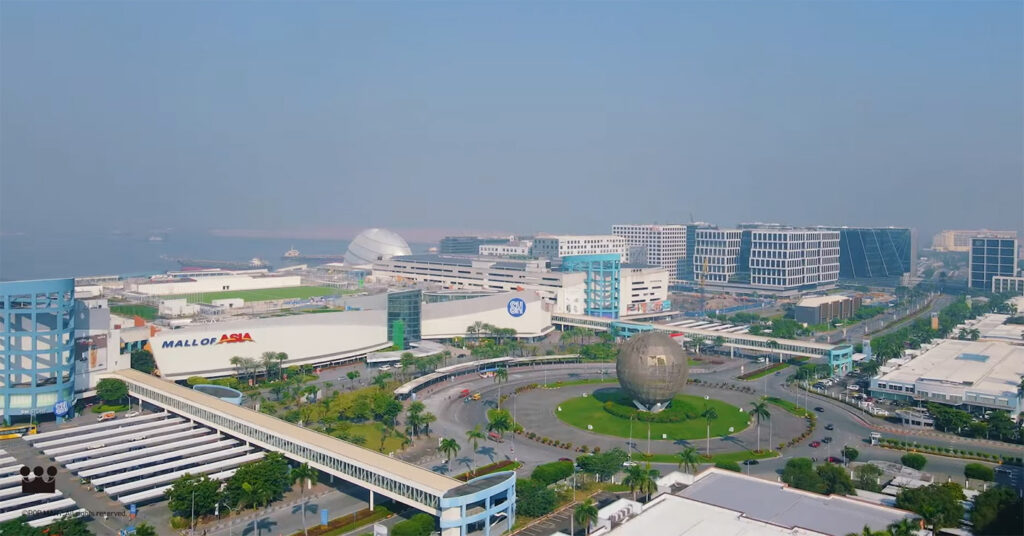
9. SM Mall of Asia
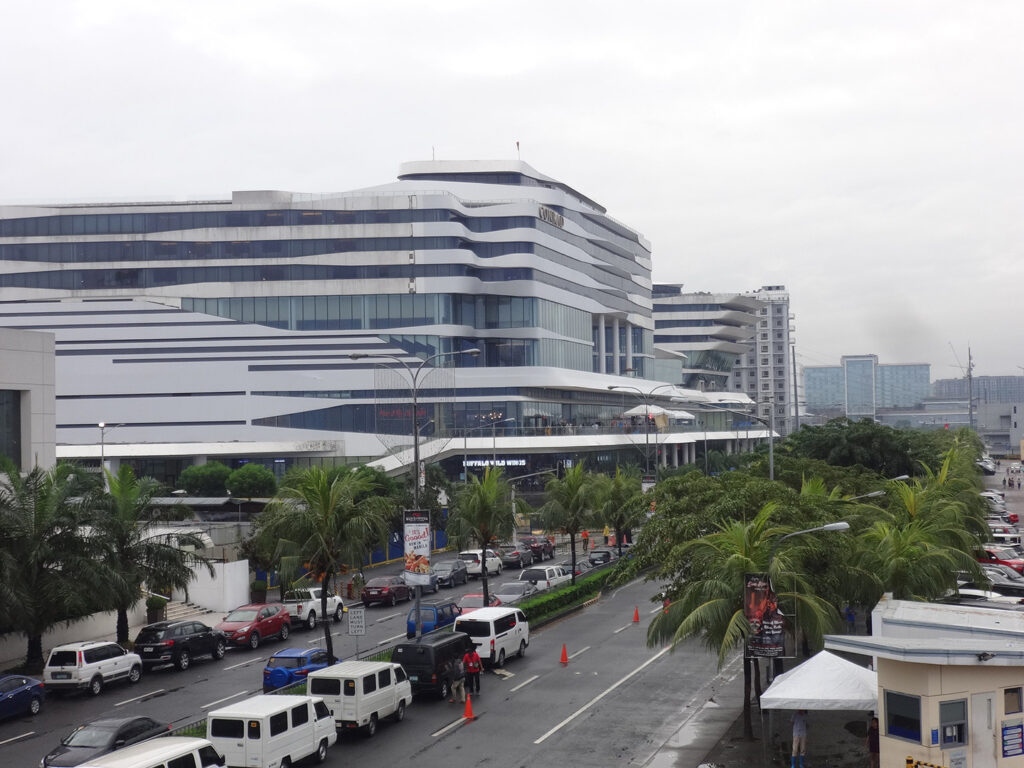
The SM Mall of Asia (MOA) in Pasay City is one of the largest malls in the Philippines and Southeast Asia, with a floor area of around 589,891 square meters. Known for its modern architecture, it has wide spaces for shopping, dining, entertainment, and events, including an ice-skating rink and a large arena.
MOA represents the Philippines’ modern growth and economic progress while showcasing Filipino culture through local products, food, and events.
10. The Mind Museum
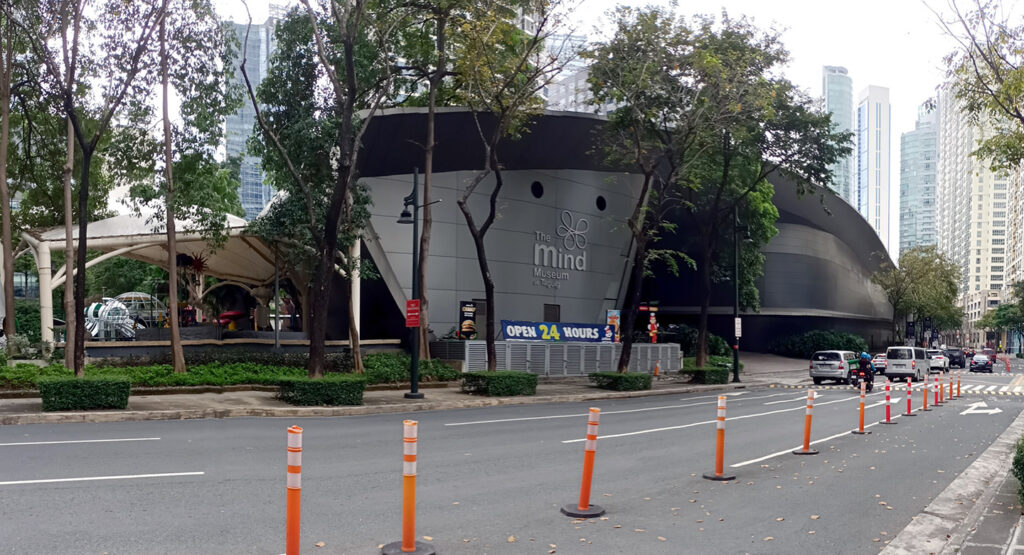
The Mind Museum in Bonifacio Global City (BGC), Taguig, is a world-class science museum featuring modern architecture and over 250 interactive exhibits.
It helps visitors, especially students and families, understand science and technology through engaging and hands-on experiences. As a landmark for education, it highlights the Philippines’ efforts to promote learning, innovation, and progress in science.
See Also Modern Asian Architecture: 12 Key Structures and Innovations
Natural Landmarks
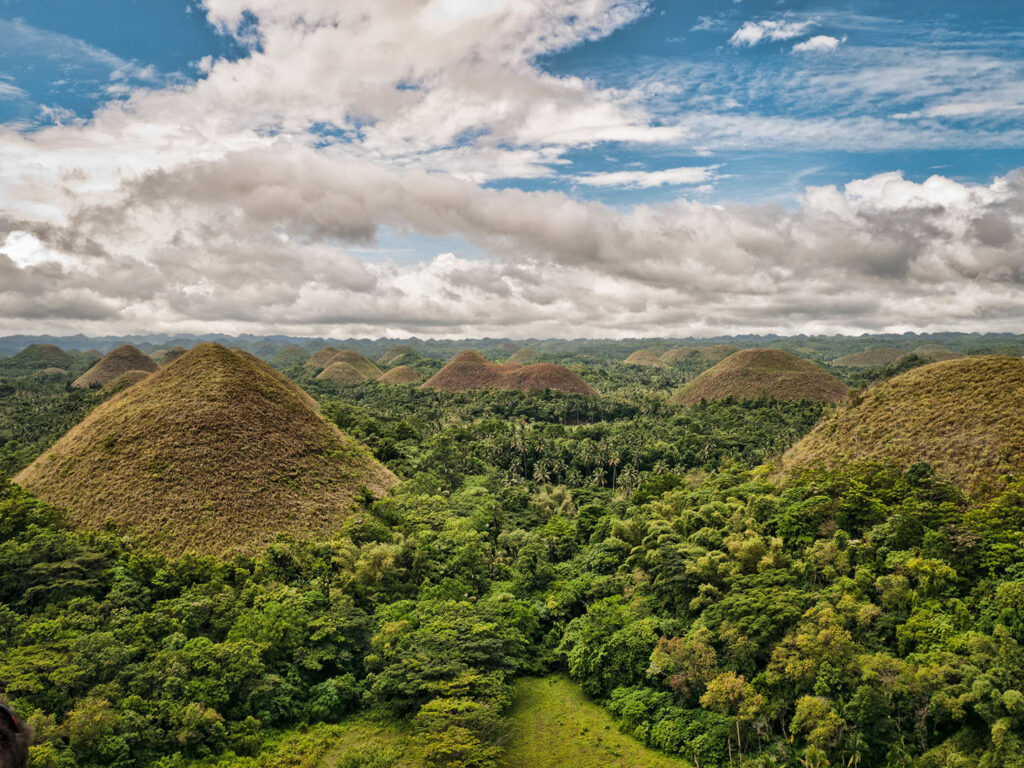
The natural landmarks in the Philippines are known for their beauty and wonder.
The Chocolate Hills in Bohol are made of over 1,200 hills. They turn brown during the dry season, which is why they are called “chocolate.” This is one of the country’s natural wonders.
Taal Volcano, located in Taal Lake, is an active volcano that offers a beautiful landscape. It is one of the most visited landmarks in the Philippines, known for its stunning views.
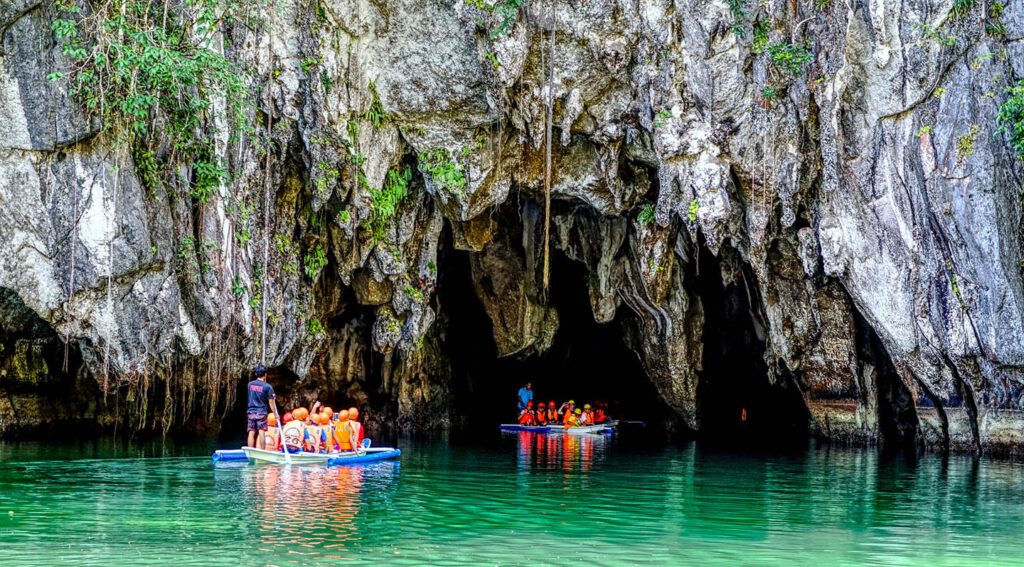
Mayon Volcano in Albay has a nearly perfect cone shape. It is an active volcano, making it a well-known feature of the country’s natural beauty.
The Puerto Princesa Subterranean River in Palawan is a UNESCO World Heritage Site. This underground river is famous for its limestone formations and amazing beauty. It is a must-visit for nature lovers.
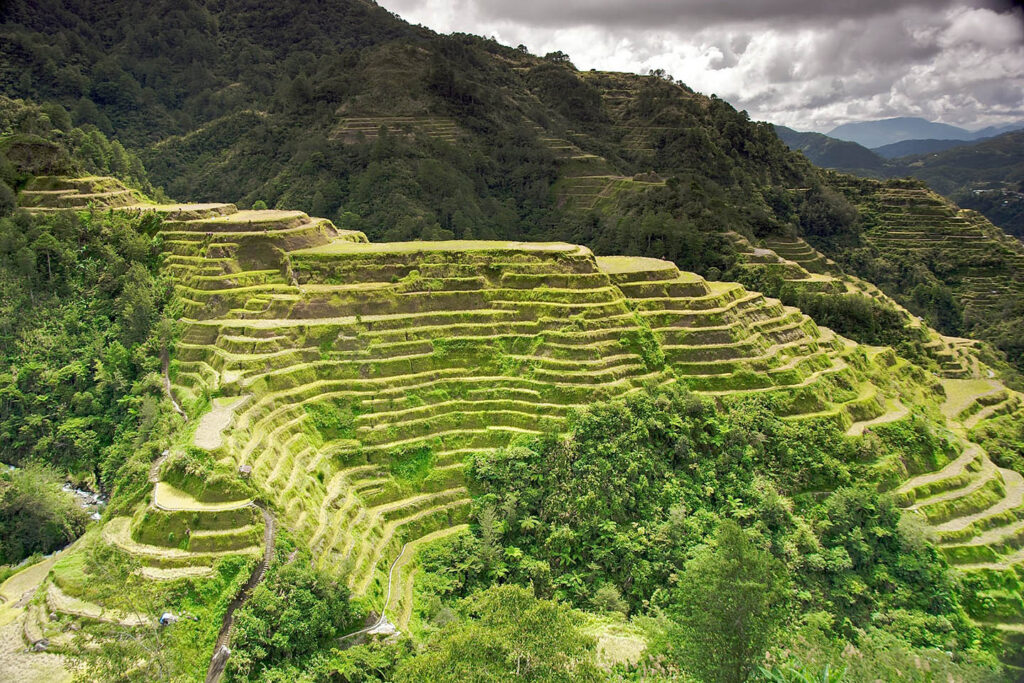
The Banaue Rice Terraces in Ifugao are ancient and were carved into the mountains over 2,000 years ago. They show the ingenuity of early Filipinos and are part of the country’s agricultural history.
Finally, El Nido in Palawan is famous for its crystal-clear lagoons, beaches, and dramatic limestone cliffs. It is one of the most beautiful places to visit in the Philippines.
See Also Famous Architecture in China: Top 14 Iconic Landmarks
Philippines Famous Landmarks: A Recap
The Philippines boasts a rich array of famous landmarks that reflect its vibrant culture, history, and natural beauty. Rizal Park in Manila honors national hero Jose Rizal, while the historic Intramuros features San Agustin Church and Fort Santiago, symbols of the Spanish colonial era.
For nature lovers, the Chocolate Hills in Bohol and the perfect cone-shaped Mayon Volcano in Albay are must-see wonders. The UNESCO-listed Underground River in Puerto Princesa is another breathtaking natural treasure.
History enthusiasts can explore Corregidor Island and the Cagsawa Ruins, which tell the story of the country’s World War II past. From historic sites to stunning landscapes, the Philippines offers a variety of landmarks worth discovering.



